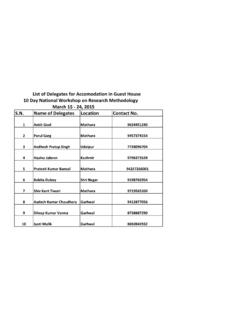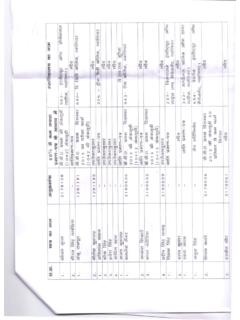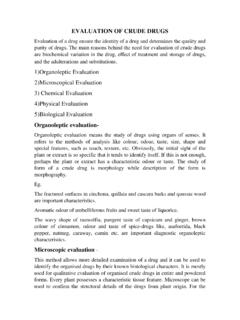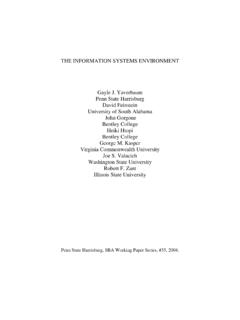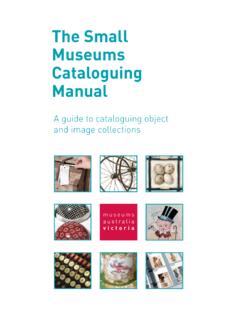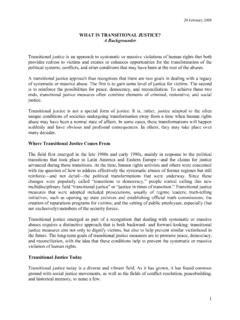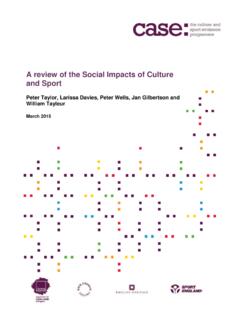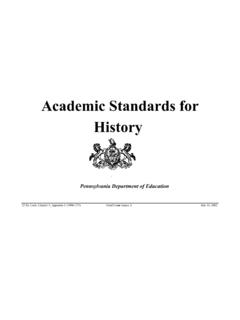Transcription of The Role of Destination & Attraction in Tourism.
1 the role of Destination & Attraction in Tourism. A tourist Destination plays an important role in attracting tourist, a tourist Destination is a geographical location which has all the important components to attract tourists and full fill their all demands and needs, A tourist Destination comprises of different components which are characterized as the 4 A's. The 4 A'S are classified as follows: Attractions which motivate and attract tourist to visit the Destination and it consist of the man made as well as natural Attraction features or cultural events. Amenities which include a range of supporting facilities and services like accommodation, food, entertainment and recreation which are required by tourists at the Destination .
2 Access in terms of development and maintenance of transport which provides the link to the tourist Destination as well as the tourist attractions at the Destination . Ancillary services which are provided to customers and industry by the Destination through a local tourist board. Tourist attractions Gunn stated that tourism attractions form an essential part of tourism destinations and that they are one of the four key segments of the tourism system. Attractions are located within the Destination and they form the basis of the tourism product at the Destination . A Destination without potential or real tourism attractions cannot be developed into a tourism Destination .
3 There are various forms of attractions but not all of them can be used for tourism, therefore those used for tourism purposes must be classified as tourism attractions. Tourism attractions form part of the basic tourism resources and are one of the major reasons why tourists visit a Destination . Inskeep stated that tourism attractions can be divided into 3 categories;. Nature Attraction : Nature Attraction consists the environment and natural resources such as wildlife sanctuaries, sunset and sun rise viewpoints, national parks, beaches, mountains, rivers, and other natural phenomena. Culture Attraction consists of entertainments and human activities such as khajuraho dance festival, TansenSamaroh, jaisalmer camel festival,Nehru boat race Kerala etc.
4 Unique Attraction Tourists are motivated to visit a particular Destination by the information that they receive and their own motivation Push' them to visit a Destination where their needs and wants can be satisfied. Smith (1996) stated that the push'. factors are the socio-economic factors of the tourist as well as their motivation to travel and the pull' factors are the information received and the resources which are provided at the Destination . Components of tourism Tourism is a combination of sectors to form an industry. Such sectors are: a) Attraction sector These are nature based or man made used for tourism product development.
5 There are three main types of attractions: i) Natural Attraction are nature based ike oceans, lakes, mountains, beaches, climate, wildlife, rivers etc. ii) Cultural attractions are secondary elements of attractions comprising the way of life of indigenous community in a particular area (natural setting) having not been highly affected by modernization. The cultural elements include rural village, remote setting, architecture, dress, art, handicraft, beliefs, religion, language, local food etc. iii) Special attractions are tertiary element of Attraction consisting of built environment by man museums , entertainment centers, aquariums, athletic stadiums, theme parks, casinos and gambling centers, zoos and and camping sites can also be categorized as special Attraction .
6 B) Transportation sector forms dynamic element of tourism involving modes and means of transport and travel infrastructure like ports and airports. It links TGR and TDR. It is also a tourism product/service and determines the tourists' experience on transit. It qualities are: i) Reliability ii) Affordability iii) Convenience iv) Variety v) Comfort. c) Hospitality sector comprise of accommodation organization, catering organization and attitudes of community towards tourists and tourism business. It is therefore subdivided into sub-sectors like lodging subsector (accommodation), food service subsector (catering) and entertainment.
7 As shown below: Lodging comprises hotels, apartments, campsites, bandas, log cabins, lodges, villas, resorts, inns and tree houses etc. Food service subsector includes fast food operators, vending outlets, restaurants, functional catering/institutional catering etc. Functional catering offer meals on premises and transport them for consumptions during events like wedding, conferences, hospitals, schools etc. Entertainment subsectors comprise organizations that offer live or recorded music, discotheques, clubs, traditional entertainment music etc. d) Organization sector comprise of all the operations within the tourism distribution system who determine the movement of travel packages from manufacturers to tourists through intermediaries and support services.
8 They include tour operators and tour agencies that are connected to principals and consumers and support networks as shown below. Principals include hotels, insurance companies, airways, and airport companies who manufacture travel elements which are packaged and priced by tour operators (wholesalers). Tour operators also make itineraries (schedule), maps; disseminate travel information, arranging travel requirements like booking and making reservations for travelers at a fee. The package is delivered to tourists through travel agents (retailers) at a commission. Tour operators can also use other support members like consolidators, air brokers and sales representatives to sell their tickets.
9 E) Tourism infrastructure include built environment like statues, railways, theme parks, monuments, and other supply system such as telephone supply and sewage system and transport facilities like roads, rails etc. They are tertiary elements of Attraction which can be considered special attractions because they facilitate satisfaction from cultural and natural resources/attractions. f) Destination services are service those facilities tourists consume throughout Destination life cycle. it include travel information, insurance, entertainment, transport, catering, accommodation, language translation, security, banking, tour guiding, authority etc.
10 Stages of tourism consumption are: i) Pre-visit ii) Transit iii) Stay at the Destination iv) Departure 2. Destination as product element of Tourist Destination . CONCEPT OF TOURISM Destination . Destinations provide tourism supply inform of attractions, facilities, infrastructure and organization which satisfy tourists' demands. Tourism product is comprises of attractions, goods and services, transportation, accommodation, DMO,DMC,machines, equipment and experiences into an inclusive intangible service to satisfy tourists' needs. The needs of tourists include novelty, adventure, freedom, change, spirituality etc.


